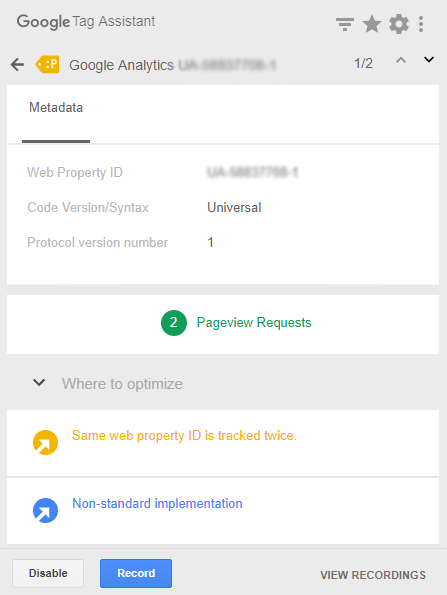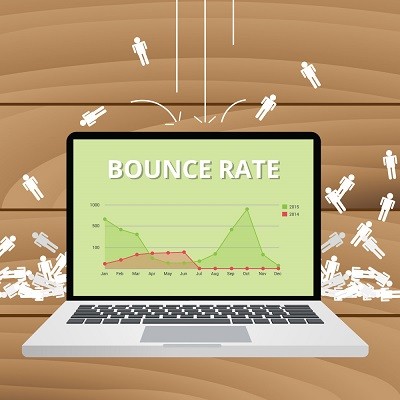JoomConnect Blog
How to Keep Visitors on Your Site Long Enough to Convert
Your bounce rate is one of the fundamental metrics in determining whether or not your website is attracting an audience and relevant traffic. While you can’t have an audience without traffic, traffic without an audience is just noise.
What Does Bounce Rate Mean?
Bounce rate is a way of measuring the percentage of visitors who go to your MSP website and leave after viewing only one page on the site. An example of this would be a visitor hits your homepage and instead of clicking any other links, they instead leave your website. The higher the percentage of visitor ‘abandonment’, the higher your bounce rate is.
How High is High?
As most instances of measurement, high can be relative, and there can be times where the type of website being visited can explain higher or lower than average bounce rate. More on that later, but for now, let’s look at some necessary measurements:
- 25% or Lower - Something is probably broken
- 26 - 40% - Excellent
- 41 - 55% - Average
- 56 - 70% - Higher than normal, but could make sense depending on the website
- 70% or Higher - Bad and/or something is probably broken
The overall bounce rate for your site will live in the Audience Overview tab of Google Analytics.

Once you have your bounce rate, it’s time to determine which strategy to use to improve it. Here are some ways to reduce bounce and increase overall engagement.
How To Improve Bounce Rate
Increase Overall Website Speed
Website speed can affect the bounce rate. If the site takes too long to load (more than a few seconds), your visitors will leave — it’s just that simple. As an MSP who is supposed to be a technology expert, a slow website can damage your brand in ways beyond a high bounce rate. Recommendations to increase the speed of your site include reducing the size of your images, streamlining the number of third-party plugins and scripts, and developing a cache strategy.
Fix Misleading Title Tags, Meta Descriptions, and Outdated Content
Take a moment to ensure your title tags and meta description accurately describe what the page is about. Visitors don’t like to be disappointed when they visit a page. They expect a certain experience or information, and when they don’t receive it, they leave - most likely never to return. Finally, make sure you don’t have any broken links, one sure way to guarantee a bounce, is to provide visitors a 404 page, especially a 404 with no way to return to your main page or a way to search for the information they might have been interested in.
Stop Producing Under Developed Content
One tactic you can use to increase engagement and reduce bounce is to create and offer content which is interesting, providing answers visitors are looking for. Not only does unique content reduce bounce rate, but it can also increase the effectiveness of your SEO strategies by driving qualified traffic to your site. Here are some technical tactics you can do to increase the value of your content:
- Reduce jargon and keep your content easy to read. As an MSP, there can be a tendency to rely too much on technical verbiage to explain your services. Try to limit your content to no higher than high school level reading.
- Add at least H2 tags to tell the search engines which part of the content is important.
- Add images to reduce blocks of copy and make the page more readable.
Finally, your MSP content may need ‘freshening’ up or to be created. Consider working with a content marketing team to provide the type of content which will catch the attention of your audience and give them the information they are searching for.
Use Internal Links to Keep Them on Your Site
While creating dynamic content is an effective way to attract and maintain an audience, content can be used in additional ways to reduce your bounce rate. One way is by adding internal links within your content. Internal links are links to related pages/content on your site and provide visitors opportunities to examine further and explore your site when they click on them. Doing so can reduce your bounce rate, as visitors go from page to page as they follow the links. One thing to remember is that the links must provide value and take the visitors to pages which make sense in context to the content they are coming from.
Add Videos to Your Site
If putting videos on landing pages can increase conversions by 86%, imagine how many conversions you could have if you added videos on your MSP service pages. Not only is there an increase in conversions, but there’s also a decrease in bounce. Your video should be relatable to the page or service it is connected to and provide valuable information. As with your content, your MSP video needs to be well designed, informative, and accessible.
Poor User Experience
Your MSP website should provide your visitors with an informative and enjoyable experience. Pop-ups, aggressively placed calls-to-action, and large subscription buttons can disrupt the flow of your site and drive visitors away. Ensure you have a modern, responsive website design which allows your visitors to navigate the site, on desktop and mobile effortlessly.
Your best bet is to provide your visitors with the type of website experience that will give them a reason to not only stay longer but also return time and time again. If you need assistance developing your website, contact the experts at JoomConnect.
Fix Your Google Analytics Setup
While we’re focusing on a higher bounce rate, we need to also keep in mind when your bounce rate is too low. While it may be tempting to consider a bounce rate which is under 25% a great sign of engagement, in reality, such a low rate usually means you have two instances of Google Analytic Tracking Code on your site, which is distorting your data. One way this can happen is if you have a plug-in installed and a script hand-coded on your site. A quick way to check if you have an issue with two instances of analytic code is to use the Google Tag Assistant plug-in for Chrome:

If your bounce rate is 70% or higher, chances are your site is not engaging or providing your visitors with the experience they are expecting, despite the amount of traffic that you’re receiving. A high bounce rate can affect a wide range of desired outcomes and strategies for your MSP marketing goals. For example, if you’re running a PPC campaign and visitors aren’t staying on the landing page, then you have reduced opportunities to convert, leading to a waste of your spending.
The Exception to the Rule
While the conventional wisdom is that a high bounce rate is reflective of some failings of your website, messaging, content or all, there are some times when a high bounce rate is an accurate reflection of how your website should be performing:
- Your call-to-action is working - The reason why your bounce is high on your landing page is that it provided the visitor the solution they wanted, and they left. The number of conversions should correspond to your bounce rate percentage.
- You are providing the information the visitor is searching for - Examples of this are contact pages, business hours, or your blog content. Your visitor finds the information and they leave.
Due to this, it is always helpful to drill deeper into the data and see which pages are generating your bounce rate. You can find your bounce rate for individual channels and pages in the behavior column in Google Analytics:

Why Your Bounce Rate Matters
A high bounce rank can affect your ranking, reducing your visibility in search results. Google values user experience and treats it as a way to measure a website’s value and authority. If you have a high bounce rate, Google will assume that you aren’t providing valuable experience and reduce the number of times your website is offered as a query to a search. Eventually, this will result in your website losing rank and ending up on the second page or worse of Google.
For more information on how to increase engagement, traffic, ranking, and ultimately conversions, call JoomConnect today at 888-546-4384.




Comments